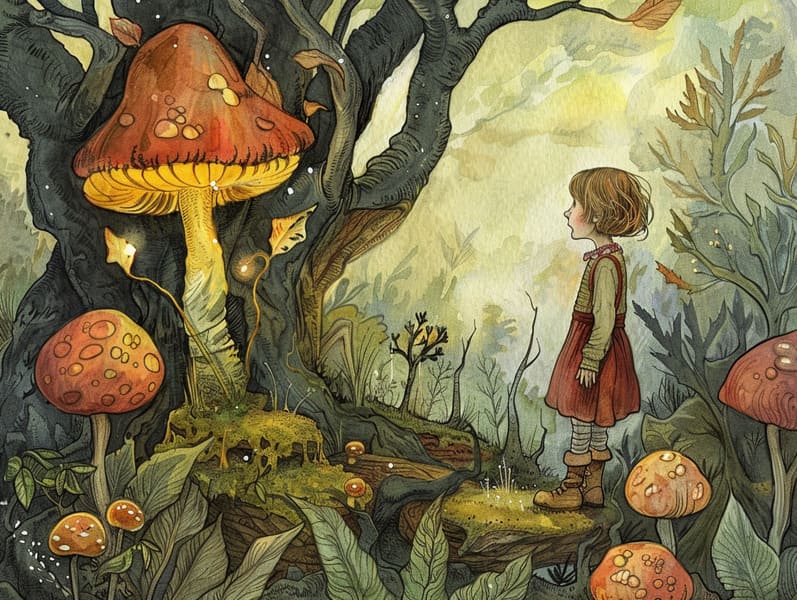The Genesis of Best Fairy Tales with the Steadfast Wonder.

Best fairy tales have historical significance. These stories have been whispered from one generation to the next well before they were ever transcribed. They originated from a variety of cultures, including Indigenous traditions. They were initially told among older generations, often carrying themes and messages mirroring the societal norms and beliefs of the time.
The famous Grimm duo, Jacob and Wilhelm (the Grimm brothers), were among the first to collect many of these beloved fairy tales. Their volume, "Grimm's Fairy Stories," included stories like "Ashenputtel," "Little Brother and Little Sister," and "Schneewittchen," which have since become pillars in the world of timeless fairy tales. Similarly, Hans Christian Andersen's whimsical fairy tales, such as "The Mermaid's Tale," and "The Story of the Ugly Duckling," have enchanted hearts worldwide, cementing their place in the pantheon of classic fairy tales.
Despite their age, these tales remain as pertinent as ever, especially as children's night stories. These delightful tales are now available in multiple formats, including vibrantly illustrated books, enchanting animations, and web-based fairy tales.
Their lasting appeal can be credited to several captivating elements:
Important Morals: Old fairy tales often convey important moral lessons. Fairy tales like "The Boy Who Cried Wolf" teach the benefit of integrity, while "The Tortoise and the Hare" emphasize the traits of perseverance and humbleness. These stories offer little ones clear distinctions between ethical and unethical, developing their moral compass in a mild yet important way.
Kindness and Comprehension: Traditional fairy tales frequently include heroines facing challenges and problems, inspiring audiences to identify with their struggles and applaud their triumphs. For instance, "Beauty's Beast" highlights the importance of seeing inner beauty to understand the inner spirit of a being, building awareness and awareness.
Cultural Awareness: Many timeless fairy tales are deeply embedded in the cultural contexts from which they came. Learning from these narratives can provide fascinating glimpses into different ways of life, strengthening a sense of global awareness and discernment.
Creativity and Fantasy: The enchanted elements in old fairy tales—magical kingdoms—fuel children’s imaginations. These fairy tales lead readers to magical realms, firing up creative ideas and a sense of astonishment that persists a lifetime.
Traditional fairy tales are not only mesmerizing but also didactic. They work as mesmerizing tools in advancing various intellectual and emotional capacities in children. When traditional fairy tales are voiced, they nurture language proficiency by offering new terms and complex sentence structures. This practice also advances hearing abilities and attention, as young ones remain attentive, eager to see what happens next.
Furthermore, exploring the themes and characters of traditional fairy tales can foster reasoning skills and thought processes. Little ones learn to pinpoint patterns, make predictions, and grasp cause and effect. These deliberations also further young readers reveal their thoughts and feelings, cultivating their emotional intelligence.
In today’s information age, the existence of online storybooks has made these narratives more reachable than ever. Websites and online apps give broad selections of popular fairy tales that can be looked at or listened through anytime, anywhere. Fairy tales voiced are particularly well-received, providing an captivating way for the young to relish these enchanting tales. Audio stories and spoken videos carry characters and settings to life, often complemented by charming musical scores and tunes that raise the tale experience.
The timeless charm of old fairy tales lies in their ability to adapt to the present while staying true to their main lessons. Contemporary reimaginings of these tales often bring in more different figures and modern settings, making them relevant to today’s audience. However, the fundamental themes of bravery, benevolence, and fair play remain unchanged, continuing to touch audiences of all ages.
Timeless fairy tales also offer a sense of serenity and recognition. They render a ordered narrative with a recognizable beginning, middle, and end, often concluding with the closure of conflicts and the triumph of truth over falsehood. This regularity can be placating for children, proffering a sense of security in an variable world.
Classic fairy tales continue to spellbind and guide new generations, maintaining their grandeur and significance in modern society. As children's bedtime stories, they feature a perfect blend of fantasy and learning, enriching moral values, empathy, and creativity. The presence of web-based fairy tales and the commonness of fairy tales narrated ratify that these traditional fairy tales remain within reach to new generations.
By conserving and telling these fairy tales, we continue to appreciate the rich tapestry of tales and cultural heritage. Whether you are reading a vividly illustrated book, perusing a electronic library, or playing an spoken story, the grandeur of traditional fairy tales is always within reach. These fairy tales show us of the invariable nature of tales and its ability to unify us across epochs and places.
No matter if you are seeing a colorful picture book, experiencing a internet library, or listening to an audio story, the awesome site enchantment of children's fairy tales is always within reach.
These tales point out of the invariable strength of tales and its ability to connect us across eras and regions, weaving a spell that delights and instructs alike.